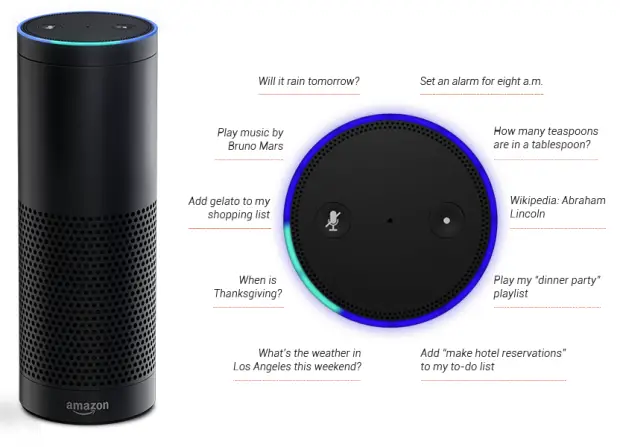With the advent of remote work and the rise of digital spaces, enterprise video platforms (EVPs) have emerged as a crucial component of contemporary business operations. These platforms allow organizations to create, manage, and share video content efficiently and effectively, facilitating everything from remote team collaboration and training to customer outreach and engagement. However, with the growing demand for interactive and engaging content, EVPs face significant challenges in terms of user engagement. This article examines the current landscape of enterprise video platforms, the evolution of these platforms, implementation challenges, and strategies for maximizing engagement.
Current Landscape of Enterprise Video Platforms
Existing enterprise video platforms and their features
The contemporary landscape of enterprise video platforms is rich and varied, with numerous offerings that cater to different needs and use cases. While we won’t delve into specific platforms, it’s worth noting the common features they possess. Most EVPs enable users to create, upload, host, manage, and distribute videos across various channels. They integrate with existing IT infrastructure and software ecosystems, offer scalability to accommodate varying user loads, and provide detailed analytics to gauge viewer engagement and content effectiveness. Many also incorporate elements of interactive video such as quizzes, polls, and comments to facilitate active viewer participation.
Challenges faced (in terms of engagement)
Despite the capabilities of modern EVPs, there are persistent challenges in terms of user engagement. A major issue is the passive nature of traditional video content, which often fails to maintain viewer attention over time. The sheer volume of digital content available can also lead to information overload, causing viewers to disengage. Furthermore, different viewers have different needs and preferences, making it difficult to create content that appeals to a broad audience.
Limitations of traditional video platforms in fostering engagement
Traditional video platforms primarily focus on the delivery and hosting of video content. However, they often lack advanced interactive features or analytical capabilities that can foster and measure engagement effectively. Moreover, these platforms may not support personalized or adaptive content, which can cater to individual viewer needs and preferences. The limitations of traditional video platforms underscore the necessity for innovative approaches to video engagement.
Evolution of Enterprise Video Platforms
In response to these challenges, enterprise video platforms are evolving in significant ways. Advances in artificial intelligence (AI) and machine learning (ML) are being leveraged to enhance viewer engagement. For example, AI-driven analytics can provide in-depth insights into viewer behavior, enabling content creators to refine their strategies based on what truly resonates with their audience.
Furthermore, EVPs are incorporating interactive video features such as live chats, polls, and Q&A sessions, allowing viewers to actively participate rather than passively consume content. They are also utilizing adaptive learning algorithms to personalize video content, catering to individual viewer needs and preferences.
In addition, technologies such as augmented reality (AR) and virtual reality (VR) are being integrated into some EVPs, offering immersive experiences that further enhance engagement. These developments represent a shift from a one-size-fits-all approach to a more personalized and interactive approach to video engagement.
Challenges and Implementation Strategies
Implementing an enterprise video platform effectively to maximize user engagement comes with its own set of challenges, both technical and non-technical. Here’s a more comprehensive exploration of these challenges and strategies to overcome them.
Technical Challenges
Integration: One of the significant technical challenges faced by organizations is integrating the EVP with the existing IT infrastructure. This includes integrating with other enterprise systems like Learning Management Systems (LMS), Content Management Systems (CMS), and customer relationship management (CRM) software, among others.
Scalability: As organizations grow, the video platform needs to scale accordingly. This could involve managing increased storage for videos, accommodating more concurrent viewers, and ensuring consistent video quality even with increased demand.
Data Security and Privacy: With the rise of data breaches, ensuring the security of the video content and user data is paramount. Additionally, privacy issues like compliance with GDPR or other regional data protection regulations can also pose challenges.
Performance: The performance of the EVP directly impacts the user experience. Ensuring high-quality video streaming with low latency across different devices and network conditions is a complex challenge.
Non-Technical Challenges
Content Creation: Creating engaging and relevant video content consistently can be difficult. This involves not only the production aspects but also incorporating interactive elements and personalizing the content for different viewer preferences.
User Adoption: Convincing users to adopt a new platform can be challenging, particularly if they are comfortable with existing systems. This challenge is often related to the user interface, user experience, and the perceived value of the new platform.
Measurement and Analytics: While many EVPs provide basic analytics, understanding these metrics and deriving actionable insights from them to drive engagement can be daunting for some organizations.
Strategies to Overcome These Challenges
Pilot Testing: Before fully integrating an EVP into the existing infrastructure, organizations can conduct pilot tests to identify and address potential integration issues.
Scalability Assessment: Regular assessments can help ensure that the EVP can accommodate organizational growth. It’s also important to select a platform that offers flexible and scalable solutions.
Data Security Measures: Opt for platforms with robust security measures, including data encryption, secure access controls, and regular security audits. Also, ensure the platform is compliant with relevant privacy regulations.
Performance Optimization: Regular testing and monitoring can help identify and address performance issues. Using a Content Delivery Network (CDN) can also help ensure high-quality streaming across different locations.
Training and Resources: Provide necessary training and resources to help content creators produce high-quality, engaging content. Encourage the use of interactive elements in the video content.
User-Centric Approach: Promote the benefits of the new platform, provide adequate training, and seek regular feedback to encourage user adoption.
Utilizing Analytics: Provide training on understanding and utilizing analytics data. Leverage AI and ML capabilities of the EVP, if available, for advanced insights into user behavior and engagement.
Conclusion
The future of enterprise video platforms lies in their ability to maximize engagement. As these platforms evolve, they are becoming more than just tools for video hosting and delivery. They are becoming powerful platforms for interaction and personalization, leveraging advanced technologies to create engaging, immersive, and adaptive video experiences. By acknowledging the challenges and implementing effective strategies, organizations can harness the full potential of EVPs, turning them into engines of engagement in the digital workspace.






